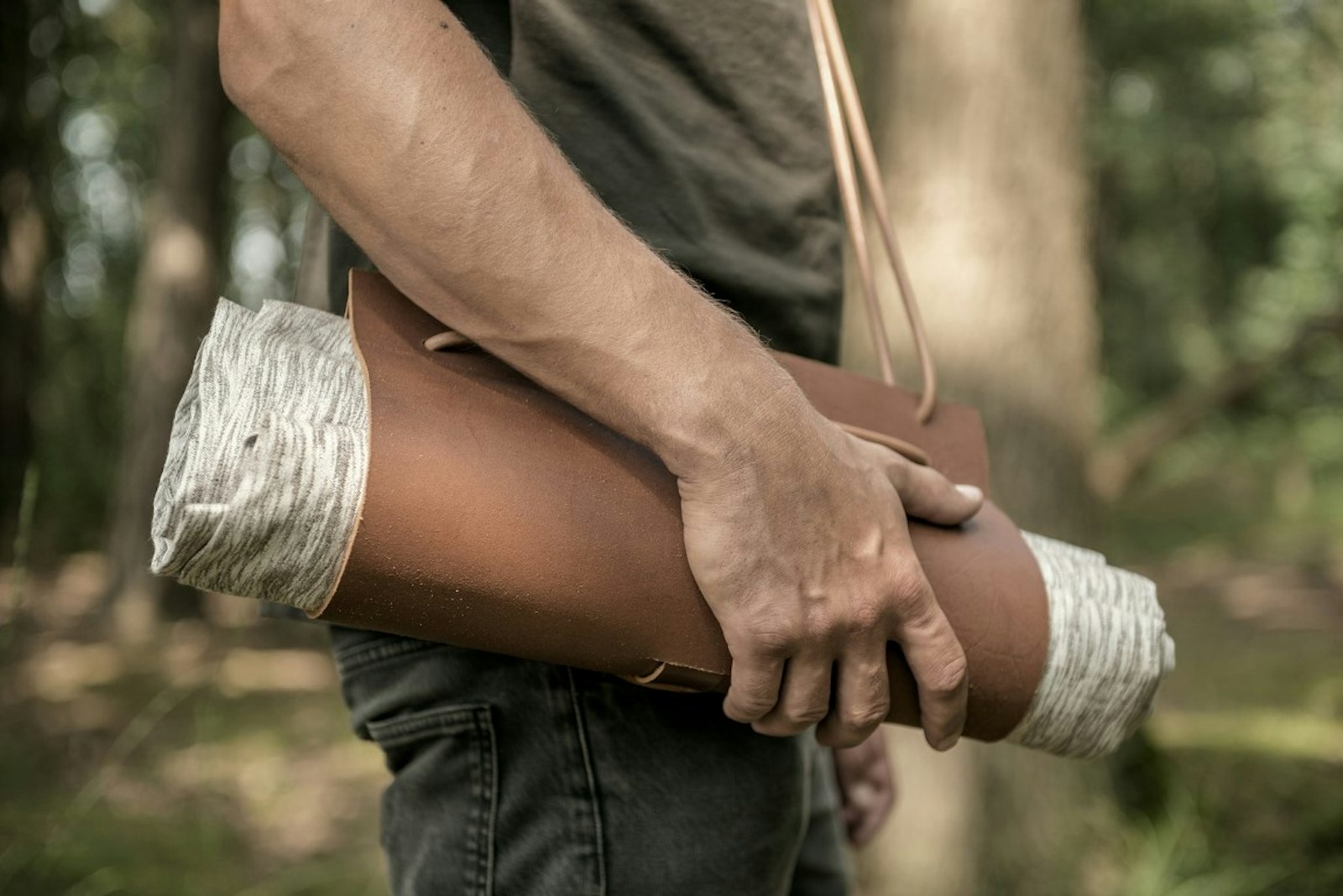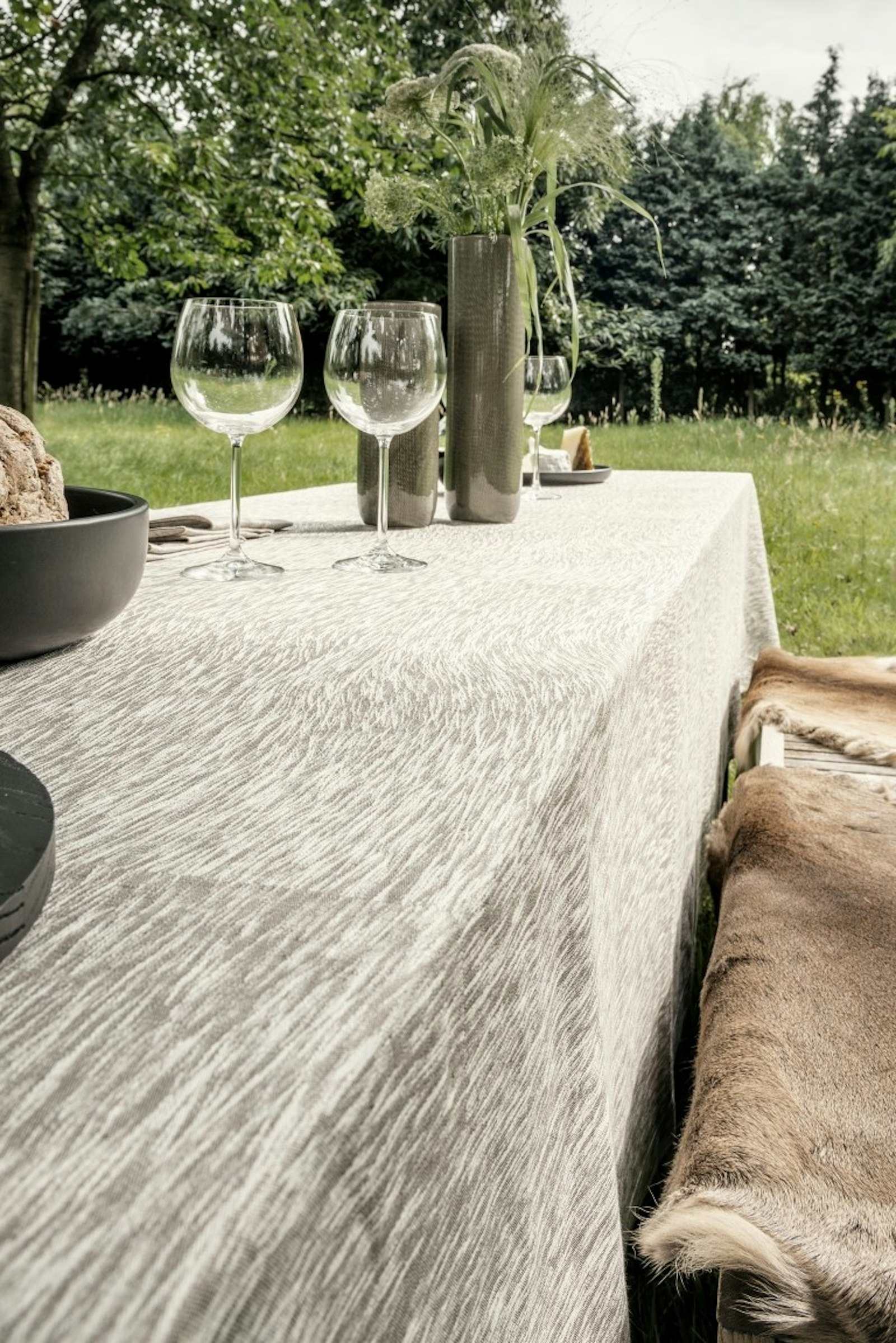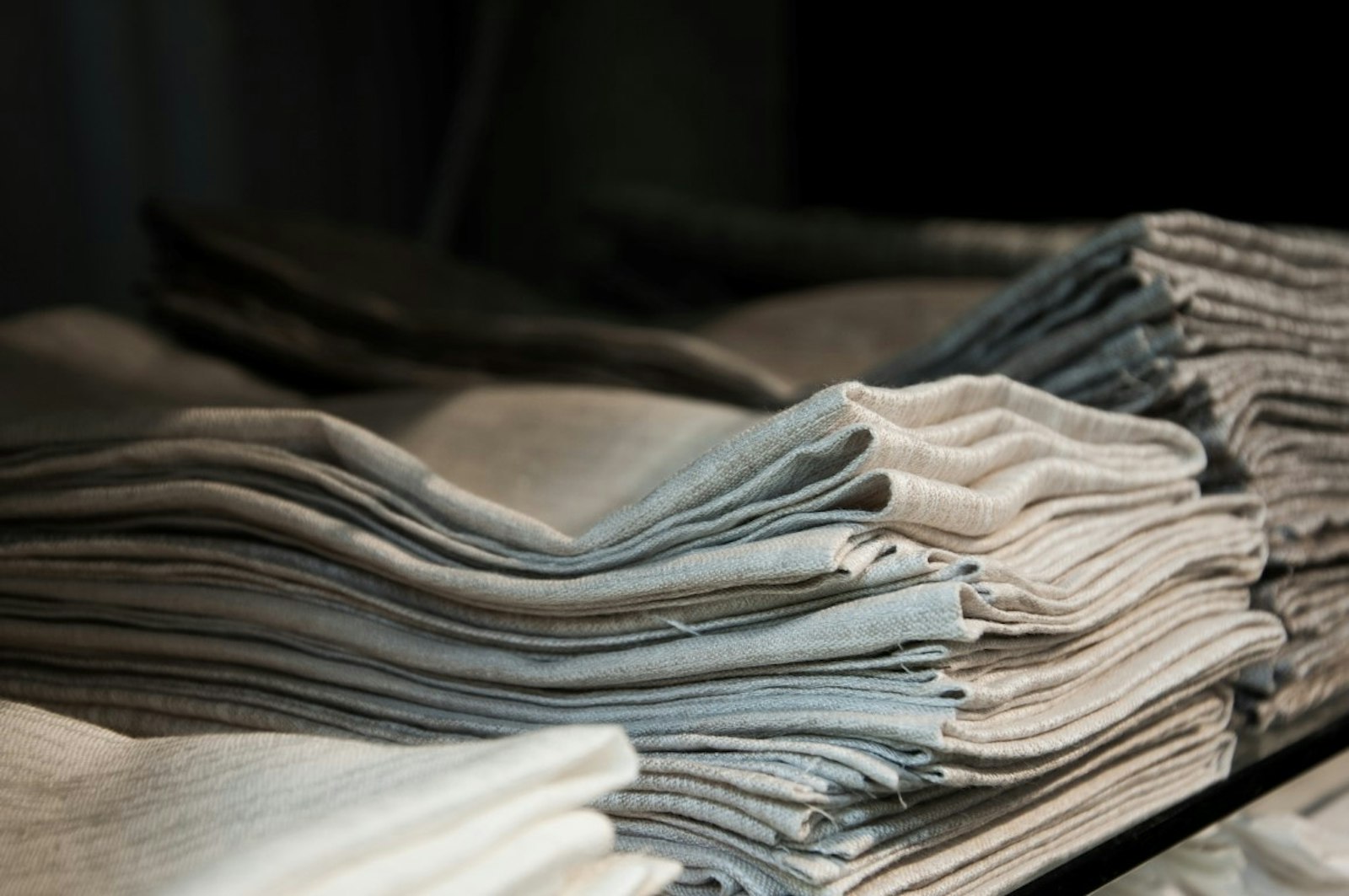de Velde
Tableskin
From Lore’s doctoral research and the artistic work resulting therefrom, the idea came to transfer this natural material and its properties to a new natural carrier. The tablecloth, Tableskin, plays with the attractive and repulsive of ‘hair’ at the table. De irregularity and the tactile appeal of the material were literally portrayed. A digital image of a roedeer hide was transformed into a natural linen fabric thanks to the combination of Verilin’s tradition, craftsmanship and innovation. The matching napkins derived form a close-up of a cowlick hair growth from the same roedeer hide. Where you can doubt with the tablecloth, there is no doubt with the napkins. You are wiping your mouth with hair. Tableskin was the result of bringing together creators, designers and companies creating a new product with the added value of appreciated crafts.
Verilin is a textile company from South West Flanders. The family business has an unknown expertise in the weaving of linen and can handle the most complex patterns with its jacquard fabrics. Verilin faces challenges and loves to work with artistic thinkers and makers who need their knowledge and craftsmanship. They translated, together with Lore, the tactile and playful hairy structure of the roedeer hide into a poetic table linen in which soft brown hairs are moving on a white background.
The unique and innovative character of this design is that the basis doesn’t actually stem from a traditional textile design, but comes from a graphic fle (a photo), the pixels of which have been converted into a weaving program. The choice of binding, the raw material and the confguration of the loom ensure that the photograph’s resolution is retained to the greatest possible extent. In principle therefore, this is a woven photograph. Verilin calls this “Damastweven 2.0”. In this process, new design principles are harmonised with innovative solutions within an authentic industrial production environment. Thanks to the nature of all these factors, the end product acquires its own identity.



